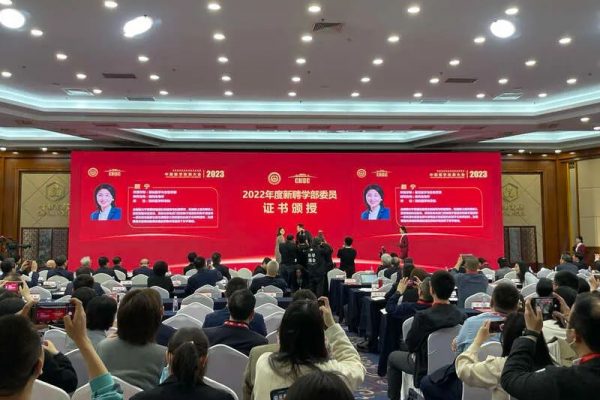Chip发表云南大学邱锋、曹建云综述论文:二维材料MoS₂及其异质结光电探测器
FUTURE远见| 2022-08-15
Future|远见
Future|远见future选编
该综述论文全面介绍了二维材料MoS₂的光电特性及其异质结光电探测器的研究进展。
近年来,由于其具有灵活和稳定的制备方法、层数可调的物性、可调节的光电响应、范德华组装等优势,MoS₂在光电探测器领域已经成为一个研究的热点。
基于MoS₂的光电探测器及阵列器件的研制,也助推二维材料集成电路的开发;例如,台积电已开始布局基于二维半导体MoS₂,集成二维绝缘材料BN与二维金属石墨烯,构建二维材料集成电路。但MoS₂较弱的光吸收(5%-10%)、较短的载流子寿命、缺陷诱导的持续光电导等限制了MoS₂光电器件的性能。除了常规的界面工程、能带工程、过程控制工程等调控因素外,层数控制工程与化学掺杂工程,给灵活的器件设计提供关键的调控手段。其中,层数控制工程可调控带隙类型、载流子浓度、比表面积、激子束缚能、宽带吸收等;化学掺杂可调控能级排列、缺陷类型与晶体完整性、界面态及低功耗输运等。为了开发高灵敏度、宽带检测、高速响应、低功耗、大规模二维集成电路及其协同的新型光电探测器,MoS₂可同多维度材料的范德华集成,并基于光伏效应、光电导效应、光栅效应(photogating effect)等物理效应,构建高灵敏、快速响应、低功耗新型器件。但在材料制备及器件构建领域,还存在诸多关键技术亟需攻克,如高质量大面积的制备技术与高质量可靠的转移技术、高灵敏与快速响应的协同、宽带探测、低功耗集成电路构建等。这些技术的发展,将为未来二维器件的构建和调控提供方向。
MoS₂光电探测器性能的调制策略
本文探讨了层数控制工程、化学掺杂工程等关键器件调控策略。单层MoS₂是直接带隙,电子激发不需声子参与,因而光电效率高。随着MoS₂层数的增加,层间耦合作用不断增强,但量子限制效应²⁻⁴减弱,直接带隙也变为间接带隙。层数调控界面耦合,也能解决石墨烯零带隙的不足,实现低的截止电流与高开关比,在高灵敏器件领域有广泛的应用。而且,通过化学掺杂工程可实现对MoS₂导电特性和带隙以及PN结界面特性的调控。化学掺杂工程同时可实现可控的层间掺杂,从而赋予MoS₂光电探测器在光致发光、光吸收等方面独特的物理特性。
MoS₂异质光电探测器的性能研究
MoS₂具备从可见到近红外的光谱响应范围,有替代Si基器件的光电探测潜力。而且MoS₂无表面悬挂键,能以范德华力(Van der Waals forces)与任意维度(nD)材料(0D量子点、1D碳纳米管、2D、3D薄膜)组装,可突破常规半导体异质结的大晶格失配瓶颈,进而开发性能独特的复合结构。并且,MoS₂光电探测器具备可调控的能带排列、增强光子吸收能力、抑制噪声电流等性质,可以用于设计特殊功能的演示器件等,进而开发出低功耗高灵敏快速响应的光电探测器件。因此,MoS₂的异质结器件组装,可降低器件设计门槛,使得新型器件构建像堆积木一样简单。
Modulation strategies for MoS₂-based Photodetectors
This work reviews the recent research progress in layer control engineering and chemical doping engineering of MoS₂-based photodetectors¹. The interlayer coupling effect decreases as the thickness of MoS₂ decreases, and the bandgap gradually increases due to quantum confinement effect²⁻⁴. The electron transition of single-layer MoS₂ is manifested as a direct transition. This transition only requires the participation of photons and does not require additional phonons, so it is more likely to occur and obtain higher quantum efficiency. Then, layer control engineering can improve the interface coupling, optimize the performance of the photodetector, and overcome the lack of the graphene zero band gap, along with a low cutoff current and high switching ratio, broadening the application in the optoelectronic device. Meanwhile, MoS₂ can achieve band gap regulation at the interface through chemical doping engineering. The unique layered structure of MoS₂-based photodetectors can realize controllable interlayer doping, affording them unique physical properties in photoluminescence, light absorption, etc.
Photodetectors based on assembled MoS₂ heterostructures
MoS₂ has the potential to be used in a new generation of photodetector devices due to its broad spectral response range. Moreover, MoS₂ has no surface dangling bonds, and van der Waals assembly would be feasible by coupling with other-dimensional materials (0D QDs, 1D CNTs, 2D, 3D film, etc.), which may result in unique and excellent composite structural devices without restricted lattice matching. Meanwhile, the hybrid heterostructures demonstrate excellent photoelectric properties with a high degree of energy band alignment, which can effectively prevent the generation of leakage current, and strengthen light-matter interaction and photon absorptions to harvest more energy. In short, MoS₂ assembled with nD materials into heterostructure detectors via flexible van der Waals integrating modulation offers a new route to the fabrication of high-performance photodetectors with versatile device architectures.
参考文献
1. Hu, T. et al. Photodetectors based on two-dimensional MoS₂ and its assembled heterostructures. Chip 1, 100017 (2022).
2. Radisavljevic, B. et al. Single-layer MoS₂ transistors. Nat. Nanotechnol. 6, 147–150 (2011).
3. Zhao, W., Ribeiro, R. M. & Eda, G. Electronic structure and optical signatures of semiconducting transition metal dichalcogenide nanosheets. Acc. Chem. Res. 48, 91–99 (2015).
4. Ellis, J. K., Lucero, M. J. & Scuseria, G. E. The indirect to direct band gap transition in multilayered MoS₂ as predicted by screened hybrid density functional theory. Appl. Phys. Lett. 99, 261908 (2011).
论文链接:
https://www.sciencedirect.com/science/article/pii/S2709472322000156
关于Chip
Chip是全球唯一聚焦芯片类研究的综合性国际期刊,已入选由中国科协、教育部、科技部、中科院等单位联合实施的「中国科技期刊卓越行动计划高起点新刊项目」,为科技部鼓励发表「三类高质量论文」期刊之一。
Chip期刊由上海交通大学与Elsevier集团合作出版,并与多家国内外知名学术组织展开合作,为学术会议提供高质量交流平台。
Chip秉承创刊理念: All About Chip,聚焦芯片,兼容并包,旨在发表与芯片相关的各科研领域尖端突破性成果,助力未来芯片科技发展。迄今为止,Chip已在其编委会汇集了来自13个国家的68名世界知名专家学者,其中包括多名中外院士及IEEE、ACM、Optica等知名国际学会终身会士(Fellow)。
Chip第三期将于2022年9月在爱思唯尔Chip官网以金色开放获取形式(Gold Open Access)发布,欢迎访问阅读文章。
爱思唯尔Chip官网:
https://www.journals.elsevier.com/chip
Warning: Invalid argument supplied for foreach() in /www/wwwroot/www.futureyuanjian.com/wp-content/themes/future/single-news.php on line 41



